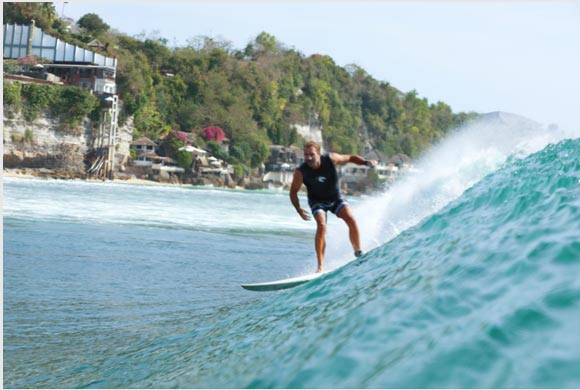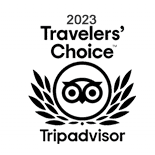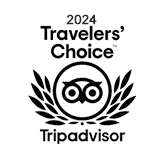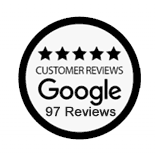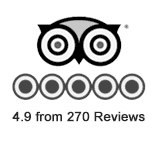CHOOSING THE RIGHT SURFBOARD

CHOOSING THE RIGHT SURFBOARD
So you’ve have had your first experience of riding waves and standing up on a surfboard and you want to take things to the next level, getting your own surfboard to continue surfing at home or to take on another surf trip.

Off you go to your nearest surf shop, or perhaps you’re looking online: You’re full of enthusiasm with the thought of treating yourself to a lovely new board.
But you are confronted with an overwhelming sight: 400 different types of surfboards, in all different shapes and sizes! Picking the right board might not be quite such an easy task after all and the pressure to make the right choice and avoid an expensive mistake can be stressful!
We see far too many people go and buy a ‘standard‘ short board, thinking ‘all good surfers are riding them, so it must be the right surfboard for me too’. The reason why many people end up buying a shortboard (too early) is that the experts make surfing on a short board look so easy; definitely a lot easier than getting through the lineup with a bigger and heavier board. In reality, many of those guys and gals who look so cool carrying a teeny-weeny shortboard around, aren’t actually catching any waves!
So…….
“What’s the right surfboard for me?”
One of the most important aspects when buying a new surfboard is to be totally honest with yourself about your fitness level and surfing ability. Getting on shortboard too early is not going to make your progress quicker at surfing, quite the contrary; you will find it a lot harder to catch the waves with a board that doesn’t have the correct volume to float you properly.
“If you can’t catch the wave, you ain’t going to improve your riding”
Catching lots of waves is the key to making good progress.
Below we have highlighted some of the more common surfboard shapes and talk you through each of their individual characteristics.

 TOW BOARD
TOW BOARD
The tow in board started to appear in video’s with Laird Hamilton riding monster waves in Hawaii; their general use is uncommon.
Characteristics: Small, with foot-straps to stay in contact with the board in heavy chop.
Lenght: 4’8 to 6’2′
Fins: 3 or 4 fin setup
Good for: Expert surfers, who want to get towed into very big waves.
At Swell: We do not have tow in boards at Swell. Jet ski’s and motorised watercraft are not allowed near Cabarete bay or Playa Encuentro
 FISH SURFBOARD
FISH SURFBOARD
Originally the fish was used in the 60’s and 70’s but the design made a come-back in recent years.
Characteristics: Short (usually ridden 6 or so inches less than a standard shortboard), also wide and reasonably thick, so relatively good amount of volume. Has a ‘swallow tail’
Length: 5’2 to 6’4′
Fins: 2 big ‘keel’ fins or 4 fins
Good for: Surfers who want an alternative way of riding waves. The fish is renowned for use in smaller, mushier waves, but can also be great in larger waves. They tend to have more volume than a regular shortboard, so it makes paddling easier and getting into the wave easier too.
At Swell: We have a couple of fish boards at Swell in our rental pool, they work well in the mellow summer waves & as an alternative to a longboard.
 SHORTBOARD
SHORTBOARD
The standard shortboard evolved from the fish surfboards in the 80’s when Simon Anderson invented the 3 fin thruster set up
Characteristics: Versatile board that works in a variety of waves. Quick to maneuver and generates speed very fast
Length: 5’8 to 6’8′
Fins: 3 fin or 4 fin (quad) set up
Good for: Advanced surfers who want to perform speedy, sharp bottom turns and ‘off the lip’ manuevers + many more tricks.
At Swell: We have a couple of standard shortboards in the rental pool between 6’4′ and 6’8′ for advanced surfers. Works best in winter time when the waves are bigger and have more power.
 HYBRID
HYBRID
‘In-between board’ for people that want the maneuverability of a shortboard, but the wave catching ability of a bigger board. Good all-round board or a board to narrow the gap between a bigger board and a shortboard
Characteristics: Scaled up version of the standard shortboard, wider and with more volume to make paddling/wave catching easier.
Lenght: 6’6′ to 7’2
Good for: People who want to make the transition to a shorter board; intermediates.
At Swell: We have some hybrid surfboards in our rental pool.
 MINI GUN (OR STEP UP)
MINI GUN (OR STEP UP)
Bigger boards for bigger waves.
Characteristics: Longer than a shortboard, narrower and normally a round or pin tail for speed.
Length: 6’6 to 8’0
Good for:Surfers who want to get barrelled in fast and big waves. Mostly used in Australia, Hawaii and Indonesia
At Swell: We have one 6’6′ step up, but it rarely gets used.
 EGG
EGG
Popular design from the 60’s and 70’s; looks like a mini-mal but is more performance-orientated.
Characteristics: Narrower in the nose than a mini-mal and usually also has less volume
Length: 7’6 to 8’2′
Fins: 1 or 3
Good for: Surfers who want a more retro-surfing experience
At Swell: We have one egg in our rental pool.
 MINI MAL
MINI MAL
Smaller version of the longboard, little less volume
Characteristics: A bit less ‘glide’ than a longboard, but more maneuverability
Length: 7’6 to 8’2′
Good for: Cruisey-style of surfing for slow & small waves
At Swell: We have a large range of mini-mals at Swell, from NSP and Torq Surfboards, and they fit the surfing conditions of Playa Encuentro perfectly.
 LONGBOARD
LONGBOARD
The original 60’s longboard is still very popular. For learning, these boards have more volume and are covered in a soft EVA deck, for safety and added volume.
Characteristics: Great wave-catching ability, long glides, work best in waves that are not too steep
Length: 9’0 to 9;6
DIFFERENT LONGBOARD SHAPES

Good for: Surfers who are after a long, cruisey-glide; this is a board that catches a lot of waves
At Swell: We have several long boards in our rental pool, from high performance boards to beginner soft-tops in the 9’0 range.
 BIG WAVE GUN (aka. RHINO CHASER)
BIG WAVE GUN (aka. RHINO CHASER)
A scaled-up version of the mini-gun
Characteristics: Very long & narrow
Length: 9’0 to 11’6
Good for: Surfers who want to catch the biggest waves without the help of a jet ski, then this is the board you need. It is strictly speaking a long board but should not to be mistaken for the kind of longboard most people would want: Just because it’s long does not make it a good board for learning to surf, or for those cruisey-rides in small surf.
At Swell: No need for a big wave gun at Swell, the waves in the Dominican Republic never get the size that a board like this is needed
Conclusion: There is no one-size-fits-all for surfboards.
To make sure that you buy the right surfboard: talk to a couple of different surf shop owners or local surfboard shapers, and be honest about your goals and current skill set. Renting a board (or borrowing from a friend) is also a good way of finding out if the board is right for you.
To get a guide on what is the right amount of volume for your next surfboard, check this chart

At Swell, we have a large variety of surfboards, so Swell clients can change boards during their stay and experience the different feel of each surfboard.
More information on our surfboards can be found here.
QUESTIONS
-
HOW DO FIN SETUPS AFFECT SURFBOARD PERFORMANCE?
Different fin setups dramatically impact how a surfboard performs in the water. Single fin setups (common on longboards and eggs) provide smooth, flowing rides with less drag but limited maneuverability. The classic 3-fin thruster setup, invented by Simon Anderson in the 1980s, offers the best balance of control, speed, and maneuverability for most conditions. Fish boards typically use either 2 large "keel" fins or a 4-fin setup, which provides speed and drive in smaller waves. Quad (4-fin) setups generate more speed and work well in both small and large waves, while offering a looser, more skateboard-like feel compared to thrusters.
-
WHEN SHOULD I CONSIDER USING A MINI-GUN OR STEP-UP SURFBOARD?
A mini-gun or step-up surfboard (6'6" to 8'0") is designed for bigger waves and more challenging conditions. These boards are longer than shortboards but narrower, typically featuring a round or pin tail for increased speed and control. They're primarily used by experienced surfers in locations with fast, powerful waves like Australia, Hawaii, and Indonesia. If you're surfing consistently overhead waves with significant power, a step-up board can provide the stability and paddle power needed for these conditions.
-
HOW DO I KNOW WHAT SURFBOARD VOLUME IS RIGHT FOR ME?
The right surfboard volume depends on your weight, fitness level, and surfing ability. Higher volume boards provide better flotation and wave-catching ability, making them ideal for beginners and intermediate surfers. Lower volume boards offer more maneuverability but require better technique and fitness. When choosing a board, prioritize catching lots of waves over looking cool with a smaller board - wave count is key to improving your surfing skills.
-
WHAT MAKES LONGBOARDS BETTER FOR LEARNING TO SURF THAN SHORTBOARDS?
Longboards (9'0" to 9'6") are superior for learning because they offer exceptional wave-catching ability and stability due to their high volume and length. Unlike shortboards that require precise technique and timing, longboards provide a forgiving platform that allows beginners to focus on fundamental skills like paddling, positioning, and standing up. The extra foam and surface area make it easier to catch waves in various conditions, and the stable platform reduces the learning curve significantly. Many learning-focused longboards also feature soft EVA deck padding for added safety and comfort during the learning process.
-
SHOULD I BUY OR RENT A SURFBOARD WHEN STARTING OUT?
Renting or borrowing surfboards is highly recommended when starting out, as it allows you to experience different board types and find what works best for your style and ability level. Visit multiple surf shops and speak with experienced surf shop owners or local shapers - be honest about your goals and current skill set. This hands-on approach helps you avoid expensive mistakes and ensures you choose the right board when you're ready to purchase. There's no one-size-fits-all solution for surfboards, so testing different options is crucial.
-
WHAT'S THE DIFFERENCE BETWEEN A SHORTBOARD AND A FISH SURFBOARD?
A shortboard (5'8" to 6'8") is the standard performance board that evolved from fish surfboards in the 1980s. It features 3 or 4 fins and is designed for advanced surfers wanting quick maneuverability and speed. A fish surfboard (5'2" to 6'4") is typically ridden 6 inches shorter than a standard shortboard but is wider and thicker with more volume. Fish boards have a distinctive swallow tail and work exceptionally well in smaller, mushier waves while being easier to paddle than regular shortboards.
-
WHAT TYPE OF SURFBOARD SHOULD A BEGINNER CHOOSE?
Beginners should choose a longboard (9'0" to 9'6") or mini-mal (7'6" to 8'2") with high volume and stability. These boards offer excellent wave-catching ability and are often covered in soft EVA deck material for safety. The key is being honest about your fitness level and surfing ability - avoid the temptation to buy a shortboard too early, as insufficient volume will make it much harder to catch waves and slow your progression. Remember: if you can't catch the wave, you won't improve your riding.
-
WHAT WAVE CONDITIONS WORK BEST FOR DIFFERENT SURFBOARD TYPES?
Each surfboard type is optimized for specific wave conditions. Fish surfboards excel in smaller, mushier waves where their width and volume help generate speed, though they can also perform well in larger surf. Shortboards work best in steeper, more powerful waves that allow for quick, sharp maneuvers and high-performance surfing. Longboards and mini-mals are ideal for smaller, less steep waves where their glide and wave-catching ability shine. Mini-guns and step-ups are specifically designed for bigger, faster waves where extra length provides the paddle power and speed needed to catch and ride powerful surf safely. Hybrid boards offer versatility across a wider range of conditions, making them excellent all-around choices.
-
WHAT IS A HYBRID SURFBOARD AND WHO SHOULD USE IT?
A hybrid surfboard (6'6" to 7'2") is an "in-between board" that combines the maneuverability of a shortboard with the wave-catching ability of a larger board. It's essentially a scaled-up version of a standard shortboard - wider with more volume to make paddling and wave catching easier. Hybrid boards are perfect for intermediate surfers wanting to transition from a larger board to a shortboard, offering a good all-around performance.
ABOUT SWELL SURF CAMP
Located on the scenic north coast of the Dominican Republic is our purpose-built surf resort
We cater for surfers of all levels, from beginners to expert surfers who are looking for an active surf holiday
Swell offers full surf packages holidays
If you have any questions about this article, send us an email with your thoughts, and feel free to share it on your favourite social media site.
-
WHERE IS SWELL LOCATED?
Swell Surf camp is located on the North coast of the Dominican Republic, right in the center of the cool surfer town of Cabarete. With 3 international airports to choose from it's also one of the easiest places to get to for a quick surf getaway. Puerto Plata Airport is only 25 minutes away from Swell. On the' getting here' page you'll find the different options of getting to us.
-
ABOUT SWELL SURF CAMP
Founded in the winter of 2009, Swell Surf Camp emerged from Jeroen and Clare Mutsaars vision. They lived in the Dominican Republic for eight years and spotted a gap in the surf camp market for higher quality accommodations combined with an engaging social atmosphere. Their extensive travel and stay experiences across different countries like Costa Rica, Nicaragua, Peru, Hawaii, Indonesia and various European nations fueled their passion to elevate the surfing retreat experience.
Swell Surf Camp is renowned as the world’s first luxury surf camp tailored specifically for beginners. The founders collaborated with a notable Swiss architect to design facilities that blend comfort with style. This innovative approach ensures every guest enjoys superior lodging and amenities. Since its inception, Swell has taught over 9,000 people how to surf with an emphasis on safety, fun, and structure.
Our achievements speak volumes. Swell has collected numerous accolades and maintains hundreds of stellar reviews from guests globally. Recognized repeatedly as the leading destination for luxury surf vacations, our commitment to excellence keeps us at the forefront of the industry.
Beyond surfing, Swell offers a diverse range of activities including kitesurfing, wingfoiling, and yoga classes. Guests can also enjoy horse riding both on scenic beaches and mountain trails—plus exciting adventure-filled excursions like canyoning.
A crucial element of any vacation is food, and here at Swell we excel. We provide delicious home-cooked meals daily. For evenings out, guests find themselves just minutes away from an array of dining options that promise satisfying culinary adventures.
For those who prioritize upscale amenities and wellness in a unique setting built around learning surf skills amid profound natural beauty, Swell should be on the top of your surf destination list
-
WHAT TO EXPECT FROM A 1 WEEK LEARN TO SURF HOLIDAY
Dreaming of catching your first wave but wondering if surf lessons are really for you? At Swell Surf Camp, our lessons are designed specifically for beginners, and we mean absolute beginners, particularly those between 40 and 55 from cities like New York, Boston, or Toronto. You’ll never feel rushed, lost, or out of place. Our expert instructors genuinely love teaching, and their approach is as much about encouragement as it is about skill-building. Every instructor carefully tunes each lesson to fit one person, you, so you always get personalized support, whether you’re working on basic paddling, learning to pop up, or building confidence in the water.
The journey at Swell Surf Camp is about progression, not perfection. You’ll start with the very basics, practicing on the sand before moving into gentle ocean waves with your instructor right beside you. Throughout every lesson, our focus is on clear communication, safety, and keeping things fun. As you progress, our instructors give you feedback in real-time, helping you celebrate small wins and guiding your next steps. You’ll learn solid surfing foundations, water safety, and even the unwritten rules of surf culture. By the end of your stay, you’ll be amazed at your own growth and how natural surfing feels. Don’t wait to discover how transformative a single lesson can be, book your surf adventure at Swell Surf Camp and let your surfing journey begin!
-
WHAT SPORTS DOES SWELL OFFER?
It's not only surfing that's on offer at Swell, we also offer learn to wingfoil and learn to kitesurf packages.
